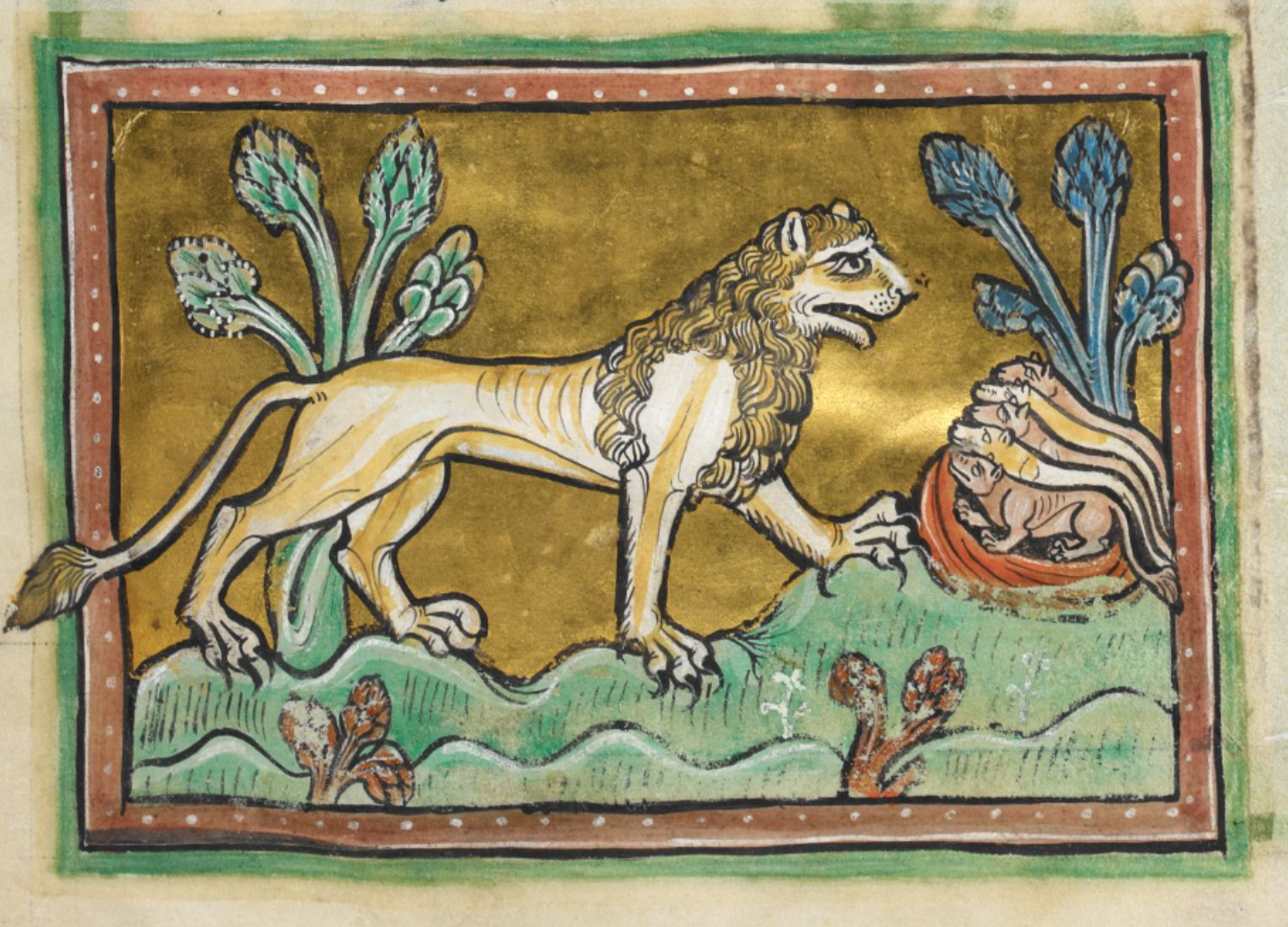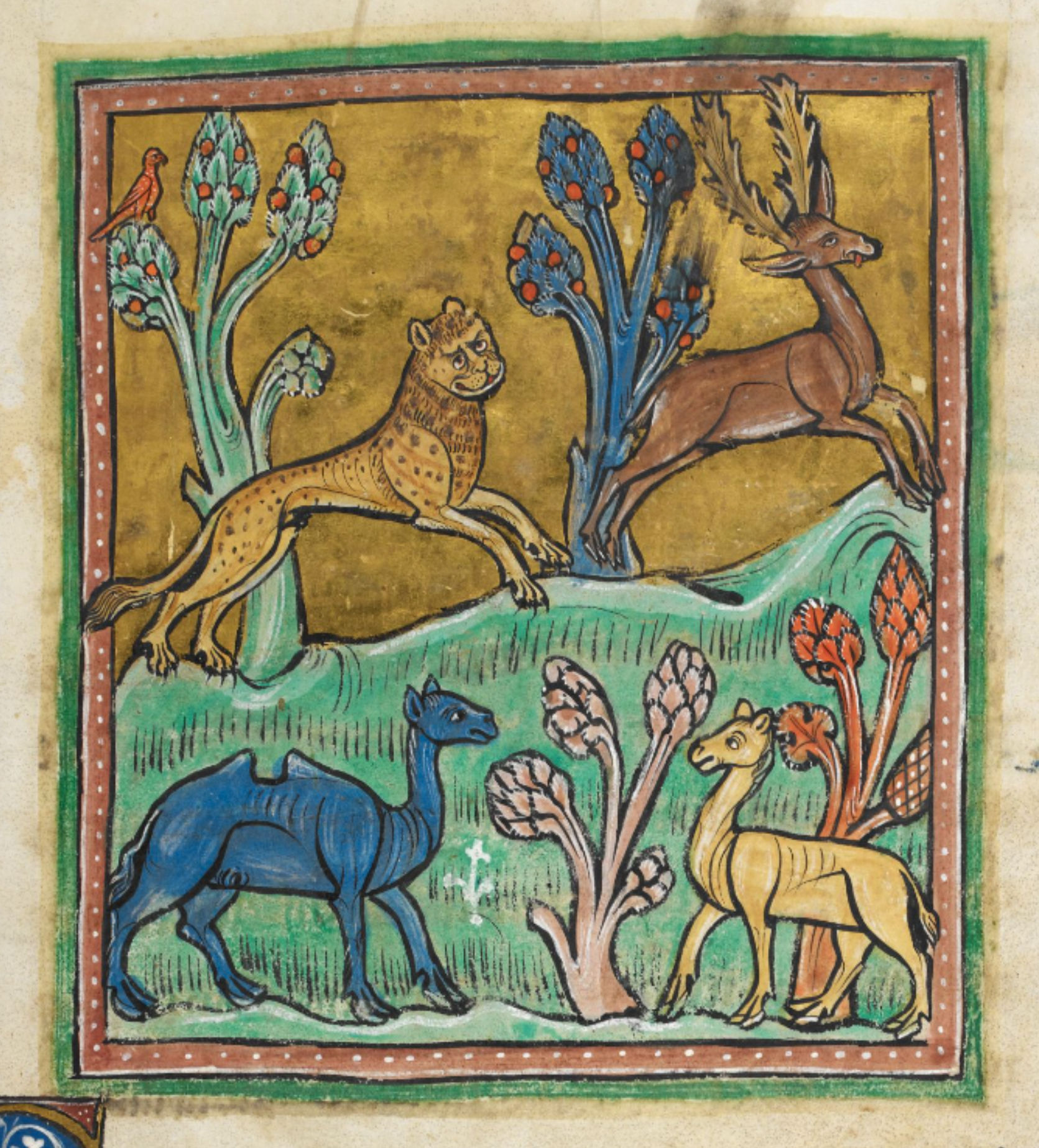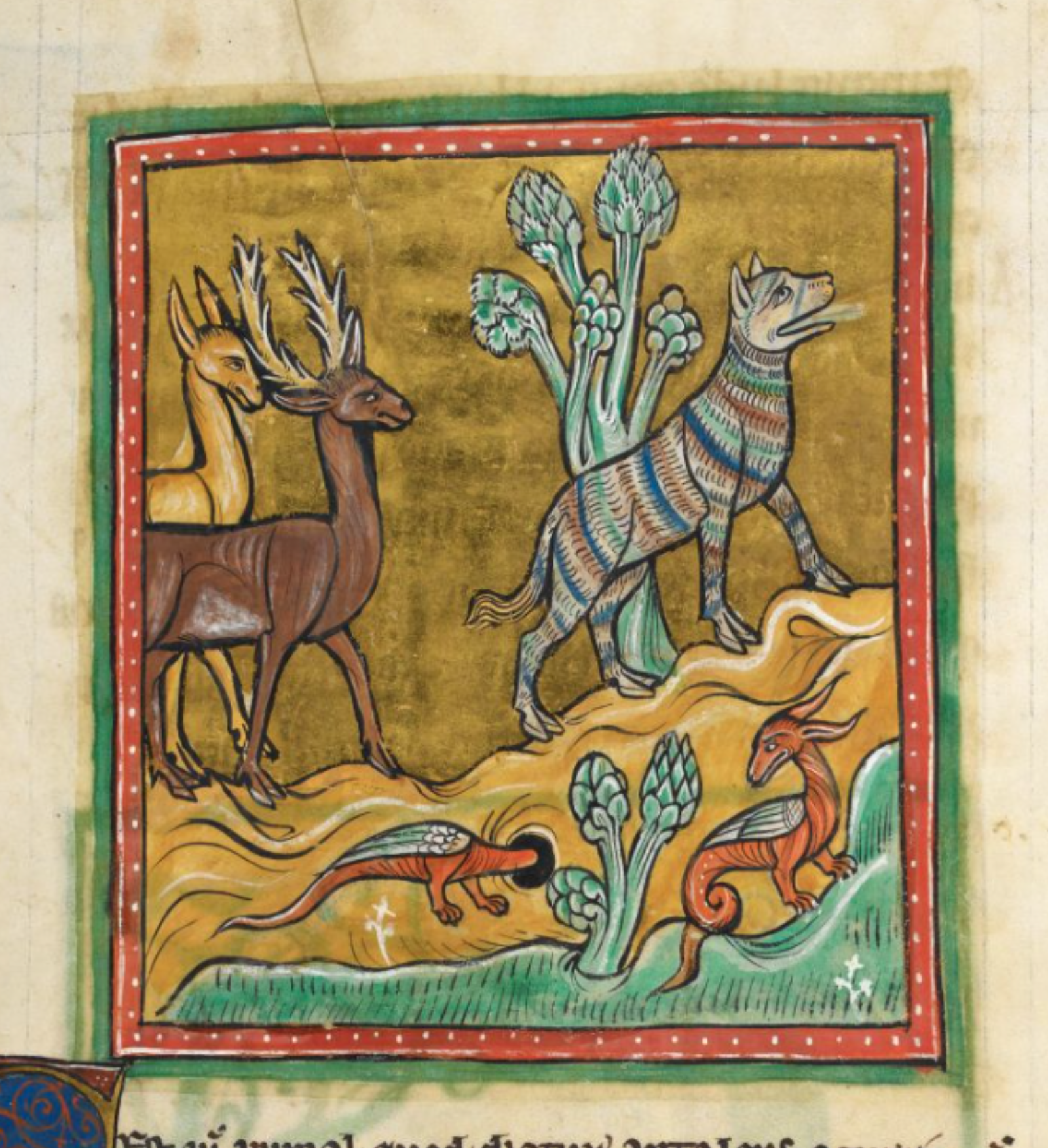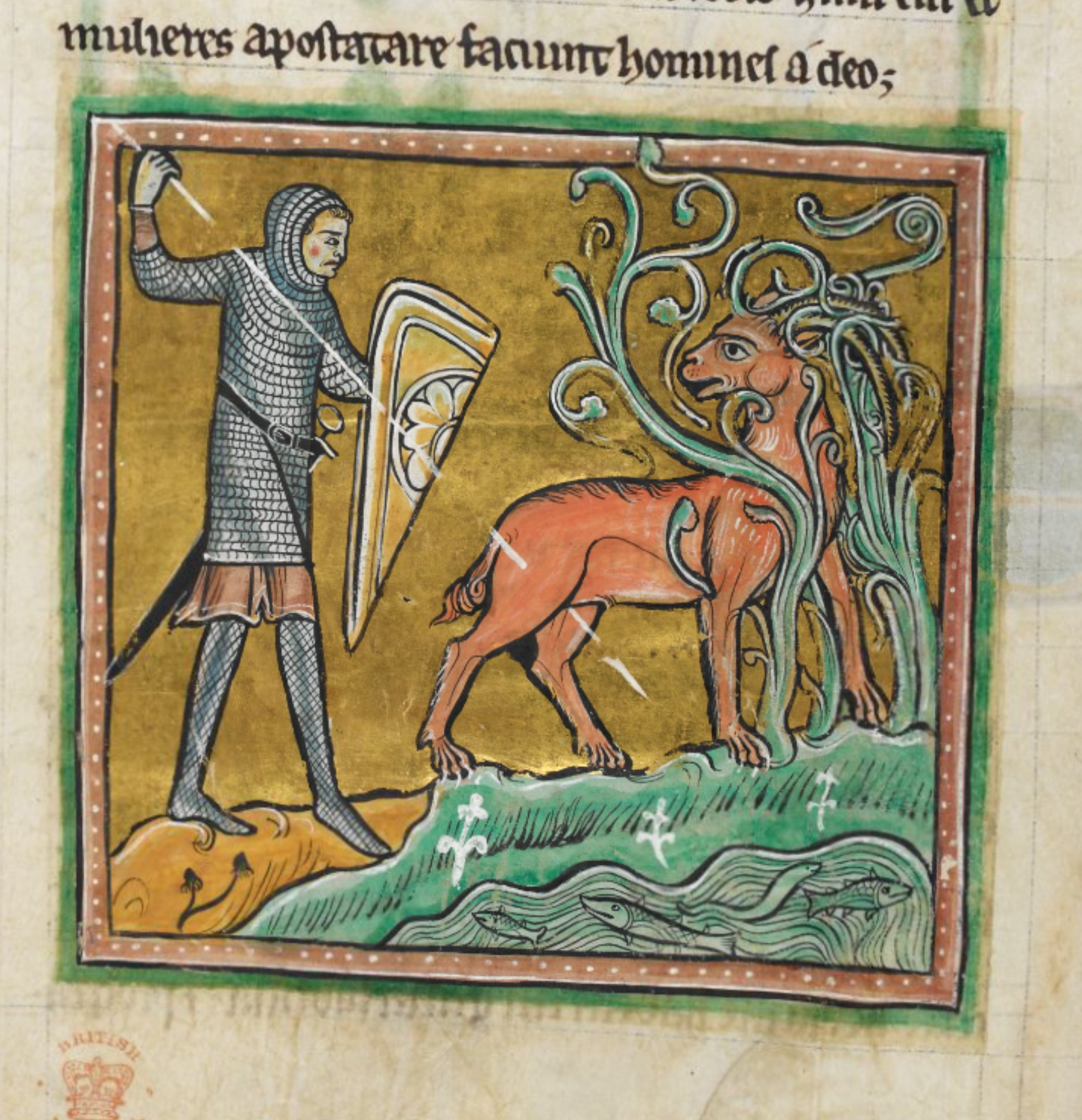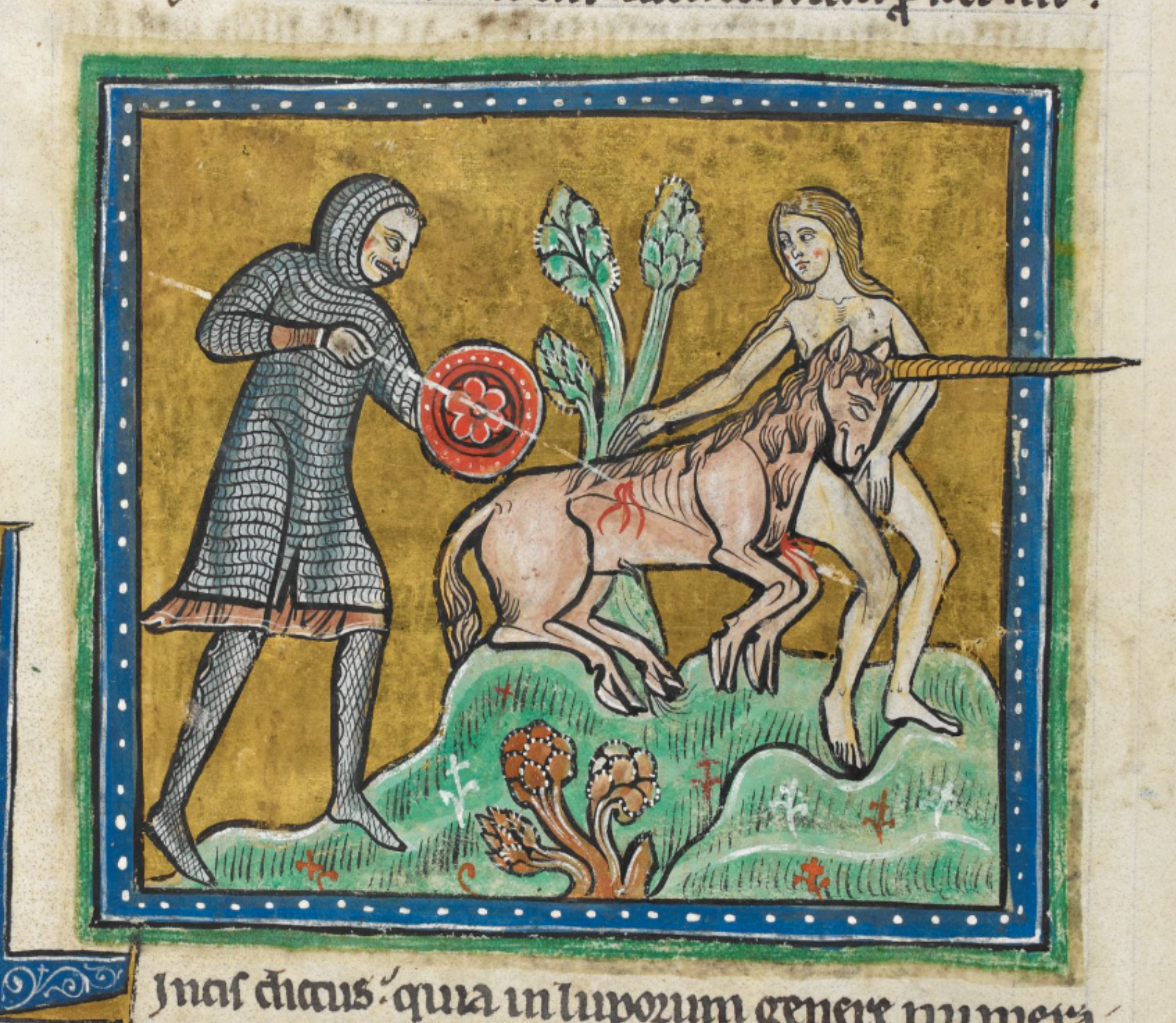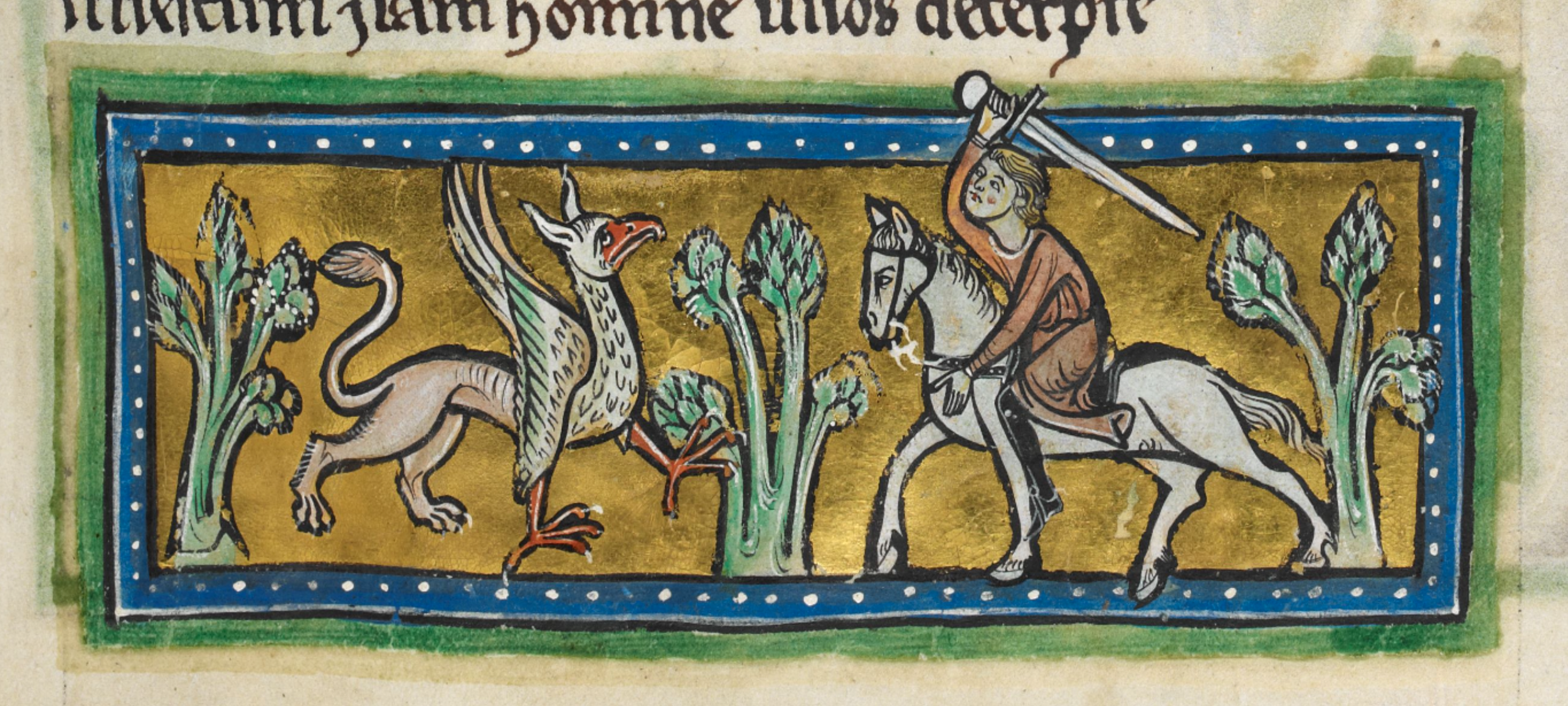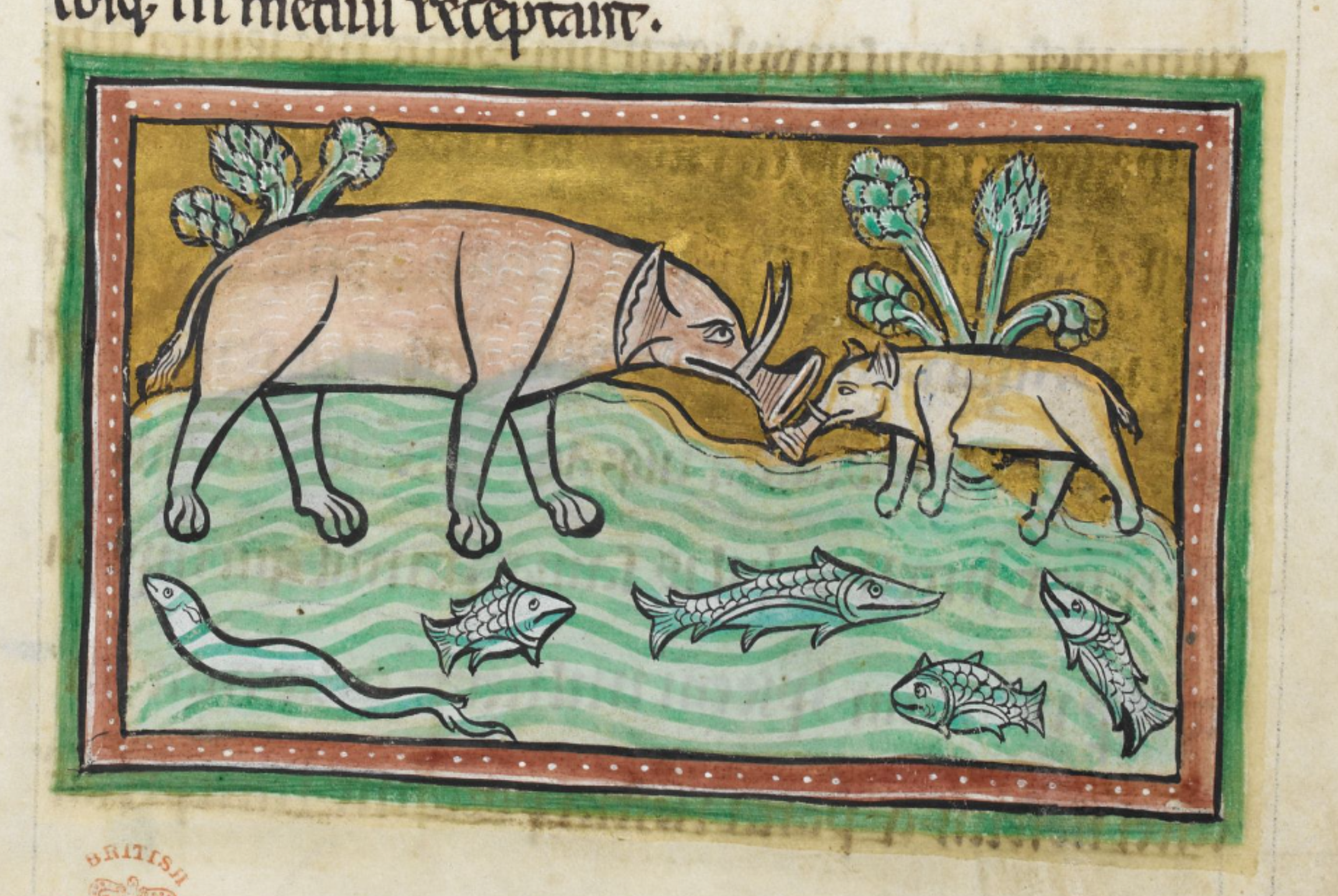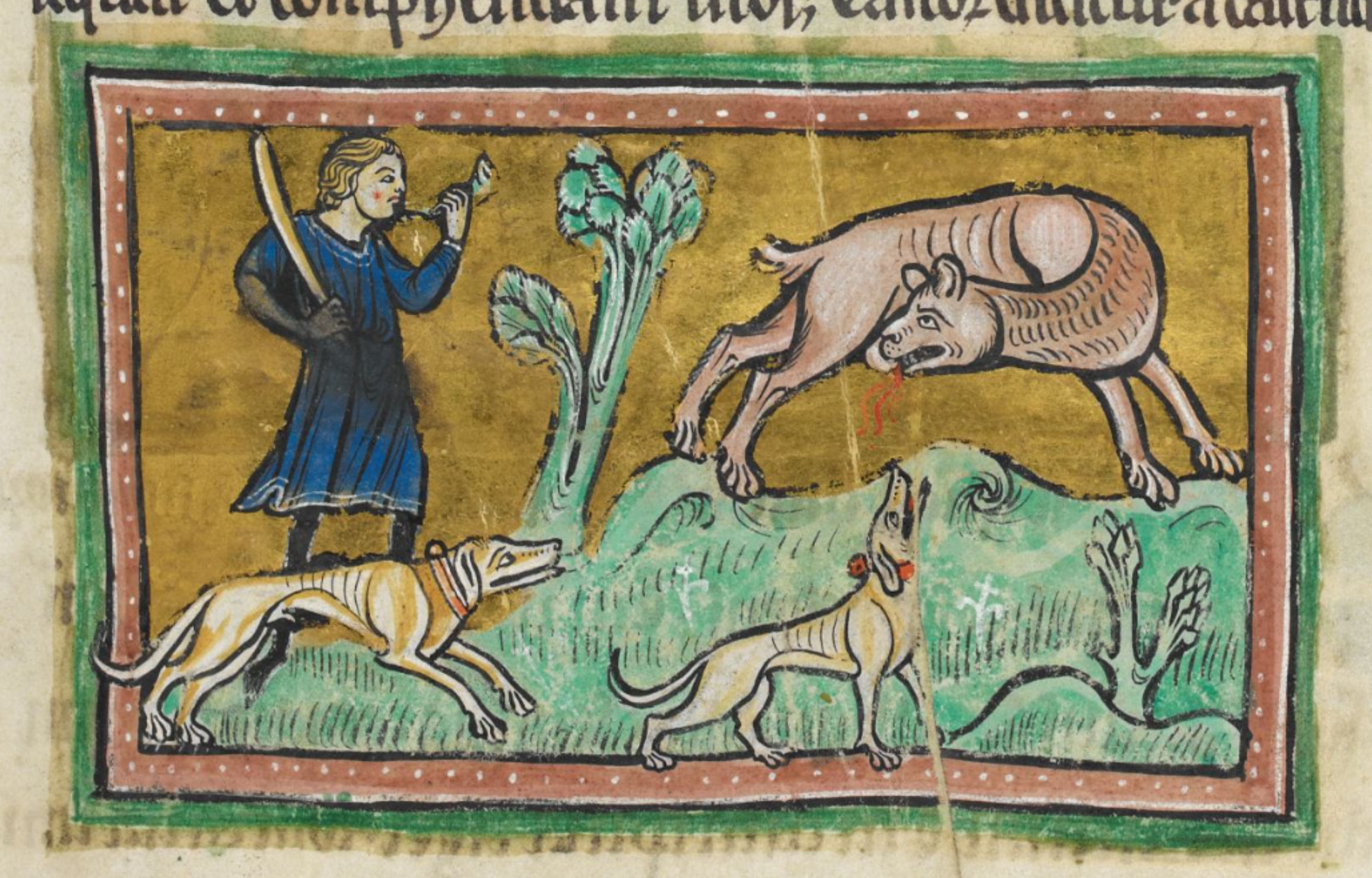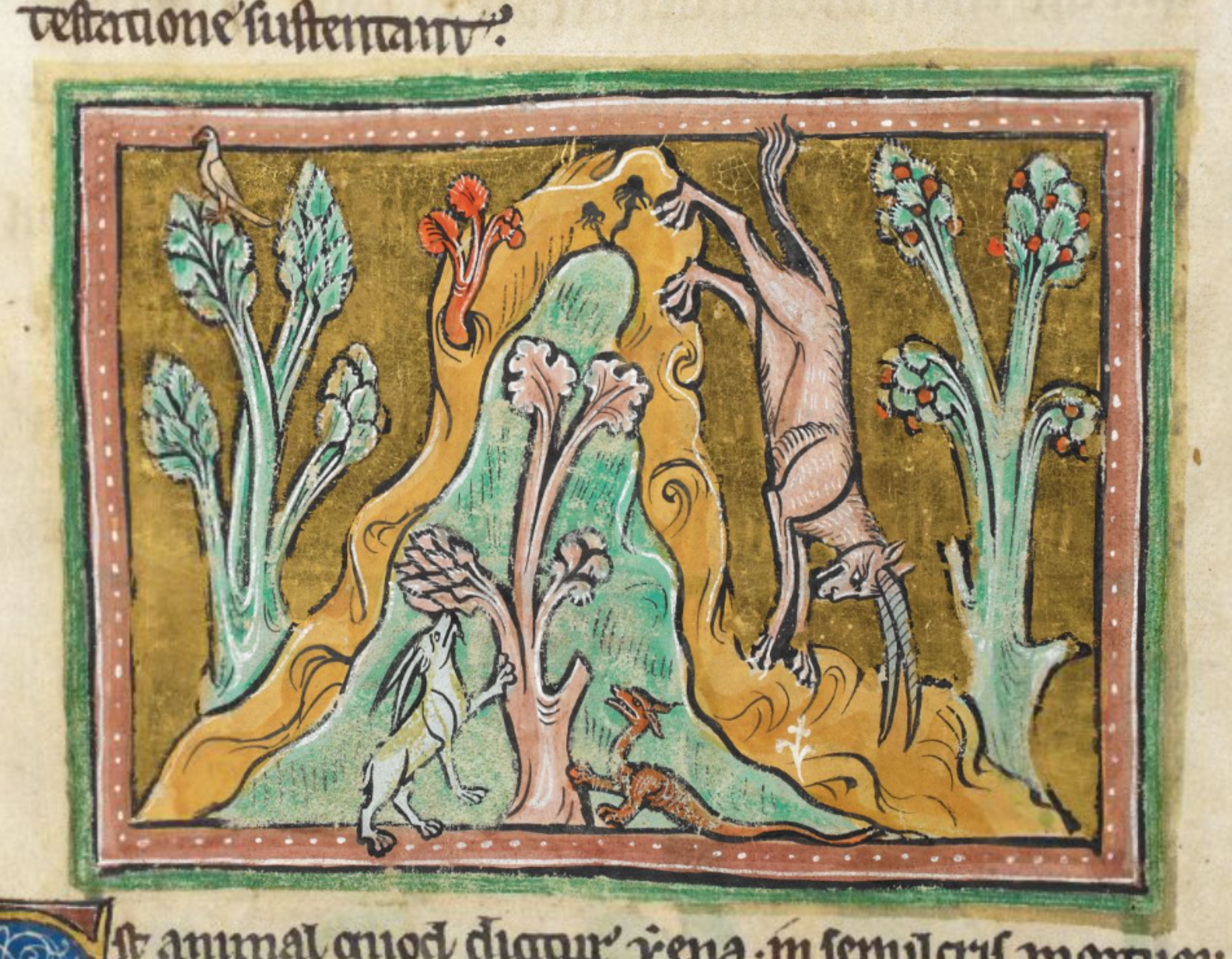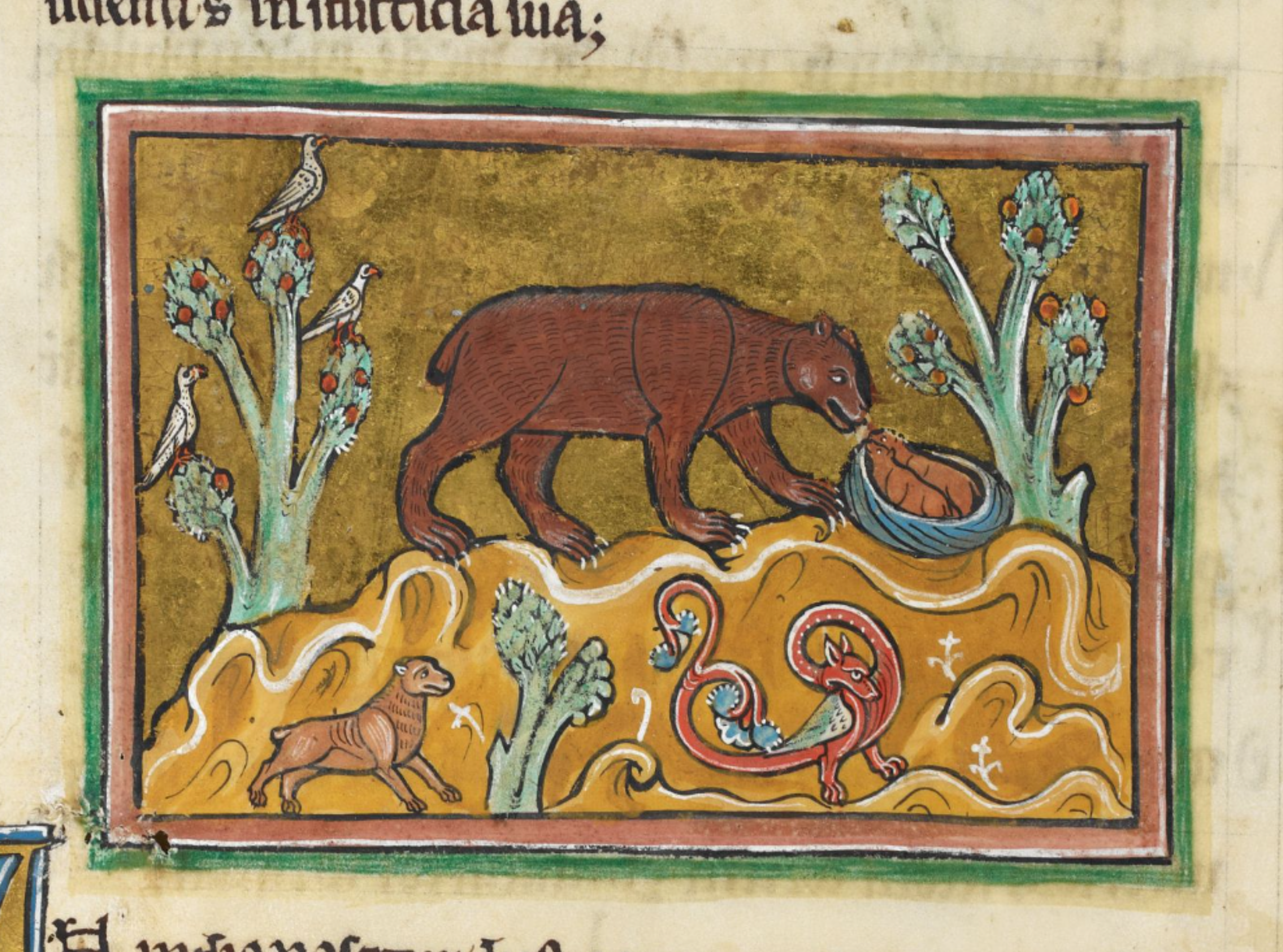Introduction to the Rochester Bestiary, c.1230
The Rochester Bestiary is a splendidly illuminated manuscript depicting wild beasts, domesticated animals and mythological creatures from around the known world. An ongoing translation project by Gabriele Macelletti and a transcription by Dr Patricia Stewart.
Lion, Rochester Bestiary, c.1230
Rochester Bestiary, ff3r-5r. British Library MS. Transcription by Dr Patricia Steward. Translation and commentary by Gabriele Macelletti.
Tiger, Rochester Bestiary, c.1230
Rochester Bestiary, f6r. British Library MS. Transcription by Dr Patricia Steward. Translation and commentary by Gabriele Macelletti.
Leopard, Rochester Bestiary, c.1230
Rochester Bestiary, f7r. British Library MS. Transcription by Dr Patricia Steward. Translation and commentary by Gabriele Macelletti.
Panther, Rochester Bestiary, c.1230
Rochester Bestiary, ff7r-9r. British Library MS. Transcription by Dr Patricia Steward. Translation and commentary by Gabriele Macelletti.
Antelope, Rochester Bestiary, c.1230
Rochester Bestiary, ff9r-9v. British Library MS. Transcription by Dr Patricia Steward. Translation and commentary by Gabriele Macelletti.
Unicorn, Rochester Bestiary, c.1230
Rochester Bestiary, ff10r-10v. British Library MS. Transcription by Dr Patricia Steward. Translation and commentary by Gabriele Macelletti.
Lynx, Rochester Bestiary, c.1230
Rochester Bestiary, ff10v-11r. British Library MS. Transcription by Dr Patricia Steward. Translation and commentary by Gabriele Macelletti.
Griffin, Rochester Bestiary, c.1230
Rochester Bestiary, ff11r. British Library MS. Transcription by Dr Patricia Steward. Translation and commentary by Gabriele Macelletti.
Elephant, Rochester Bestiary, c.1230
Rochester Bestiary, ff12r-13v. British Library MS. Transcription by Dr Patricia Steward. Translation and commentary by Gabriele Macelletti.
Beaver, Rochester Bestiary, c.1230
Rochester Bestiary. British Library MS. Transcription by Dr Patricia Steward. Translation and commentary by Gabriele Macelletti.
Ibex, Rochester Bestiary, c.1230
Rochester Bestiary, ff14r-14v. British Library MS. Transcription by Dr Patricia Steward. Translation and commentary by Gabriele Macelletti.
Hyena, Rochester Bestiary, c.1230
Rochester Bestiary. British Library MS. Transcription by Dr Patricia Steward. Translation and commentary by Gabriele Macelletti.
Satyr, Rochester Bestiary, c.1230
Rochester Bestiary, f17v. British Library MS. Transcription by Dr Patricia Steward. Translation and commentary by Gabriele Macelletti.
Deer, Rochester Bestiary, c.1230
Rochester Bestiary, ff17v-19r. British Library MS. Transcription by Dr Patricia Steward. Translation and commentary by Gabriele Macelletti.
Goat, Rochester Bestiary, c.1230
Rochester Bestiary, ff20v. British Library MS. Transcription by Dr Patricia Steward. Translation and commentary by Gabriele Macelletti.
Monocerus, Rochester Bestiary, c.1230
Rochester Bestiary, ff21r. British Library MS. Transcription by Dr Patricia Steward. Translation and commentary by Gabriele Macelletti.
Bear, Rochester Bestiary, c.1230
Rochester Bestiary, ff21r-22v. British Library MS. Transcription by Dr Patricia Steward. Translation and commentary by Gabriele Macelletti.
Wild she-goat, Rochester Bestiary, c.1230
Rochester Bestiary, ff20r-20v. British Library MS. Transcription by Dr Patricia Steward. Translation and commentary by Gabriele Macelletti.
Crocotta, Rochester Bestiary, c.1230
Rochester Bestiary, f22v. British Library MS. Transcription by Dr Patricia Steward. Translation and commentary by Gabriele Macelletti.
- Accounts
- Alkham
- Ashford
- Aylesford
- Bekesbourne
- Betteshanger
- Biddenden
- Brenzett
- Bromhey
- Bromley
- Canterbury
- Capel
- Chalk
- Charing
- Charters
- Chatham
- Chelsfield
- Cliffe
- Cooling
- Cranbrook
- Custumale Roffense
- Cuxton
- Dartford
- Deal
- Dover
- Eastbridge
- Eastry
- Faversham
- Fawkham
- Feet of Fines
- Folkestone
- Food
- Foots Cray
- Frindsbury
- Gillingham
- Goudhurst
- Gravesend
- Haddenham
- Hadlow
- Halling
- Harbledown
- Hawkhurst
- Hawkinge
- Higham
- Hoath
- Hoo
- Horton Kirby
- Hythe
- Ifield
- Inscriptions
- Ivychurch
- Lamberhurst
- Laws
- Lewisham
- Littlebourne
- Lydd
- Lyminge
- Maidstone
- Medicine
- Medieval
- Military History
- Modern
- Monasticism
- Monumental Inscriptions
- Newenden
- North West Kent Family History Society
- Northfleet
- Orlestone
- Preston near Wingham
- Rainham
- Ramsgate
- Records
- Ringwould
- Rochester
- Rochester Cathedral
- Saltwood
- Sandwich
- Shipbourne
- Shoreham
- Sittingbourne
- Snargate
- Snave
- Snodland
- Snodland Historical Society
- Stansted
- Stoke
- Stone in Oxney
- Stourmouth
- Stowting
- Strood
- Sturry
- Surveys
- Tenterden
- Textus Roffensis
- Tithe Commutation Surveys
- Tonbridge
- Westwell
- Wills
- Woolwich
- Wouldham


